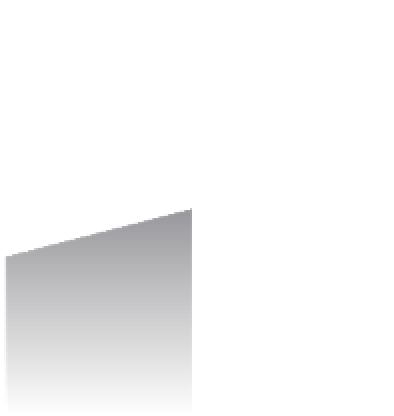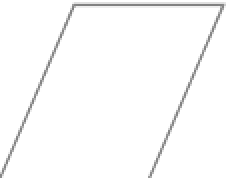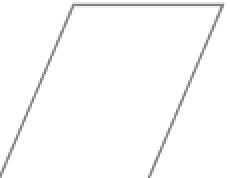Graphics Reference
In-Depth Information
Letterpress:
One of the oldest and most basic forms of printing, letterpress uses letters
molded from lead that are inked and pressed against the paper. Images and graphics can
be applied with an etched plate. Text, imagery, and graphics are locked together on the
press bed in a “chase." The process typically yields a soft, inked impression on paper.
More time intensive than offset, letterpress printing is most often used for printing art
topics, invitations and announcements, and other situations where an antique or artistic
image is desired.
Gravure:
Web presses are fitted with cylinders that carry an etched plate. The plate
transfers the inked, etched image directly onto the paper. Gravure offers excellent image
reproduction, but because of the expense involved in platemaking, it is usually reserved
for extremely large runs such as catalog printing, postage stamps, and packaging applica-
tions.
Engraving:
Similar to gravure, engraving also involves an etched plate that carries an
inked impression. With engraving, the paper is positioned and forced against the plate
with tremendous pressure, drawing the ink from the depressed areas on the plate and
yielding a slightly embossed surface, with a slightly indented impression on the back
of the paper. Limit engraved designs to 4"
×
9" (101 .6
×
228.6 mm), the size of most
engraving plates. Engraving yields sharp imagery and text, but the expense involved in
platemaking makes it suitable for long and repeat runs, such as currency and postage
stamps. Engraving is often used when a prestigious, formal look is desired for corporate
stationery.
Thermography:
Similar to engraving in appearance, thermography uses a combination of
heat-cured powder and ink to create a raised impression. Thermography costs less than
engraving and is often used on business cards and stationery. The process is not appro-
priate for printing halftones or large areas of color, which are likely to have a pitted or
mottled appearance.
Thermography involves applying powder to a slow-drying ink. After the excess powder is vacuumed away, heat is applied.
The curing of the ink and powder causes it to swell, creating a raised impression.

























































































































































































































































































Search WWH ::

Custom Search